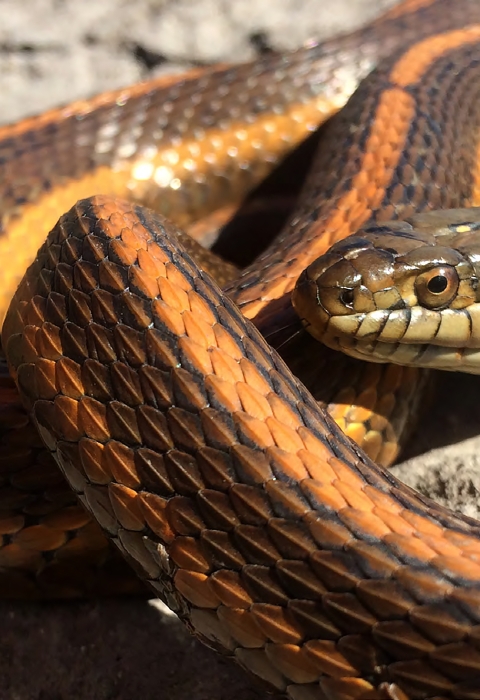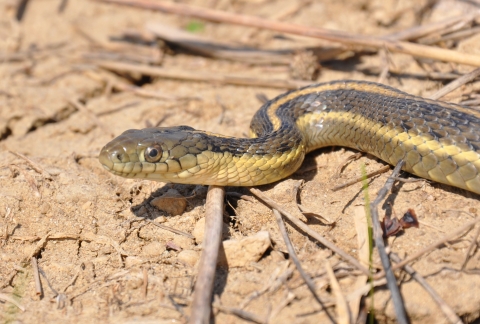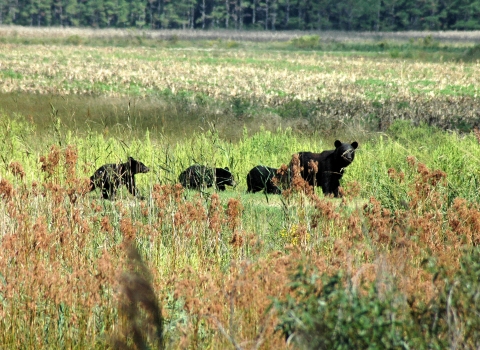If you build it, they will come. That’s what biologists in the Sacramento Fish and Wildlife Office (SFWO) are hoping as new habitat tailored to the threatened giant garter snake is created near Oakley, California.
The East Contra Costa County Habitat Conservancy recently began restoring a wetland that would support the recovery of listed species, including the giant garter snake. The 9-acre wetland is part of the Conservancy’s goal to preserve up to 30,000 acres of high-quality wildlife habitat over the next 30 years.
“The wetland looks great. They put a lot of thought into how the habitat was designed,” said Jerrod Sellers, a biologist in the SFWO Coast-Bay Division, who recently toured the site.
Giant garter snakes are mainly an aquatic species, found in wetlands, floodplains, ponds and streams with plenty of tall plants growing out of the water for them to hide in. They leave the wetlands to bask on warm rocks and search for dry, abandoned rodent burrows for overwintering. They are one of the largest garter snakes, growing up to five feet in length.
“Since the wetland is behind the levees in the Delta, it’s tied in with local floodplain control and will have water year-round. For the snakes, there are two culverts into the wetland they can use to swim in and out that will never be fully submerged,” said Sellers.
There have been no sightings of giant garter snake at the restoration site yet, but they have been seen less than a mile away in the Delta.
“It may take years to know whether this restored habitat will support a thriving population of giant garter snakes, but shorebirds associated with healthy wetlands like black-necked stilts and American avocets have already moved onto the site,” said Sellers. “Hopefully it’s just a matter of time before the snakes find it.”
The Conservancy will manage this wetland in perpetuity. California has lost the majority if its wetlands over the past 100 years, but thanks to partnerships between the Service and public and private organizations, progress is being made toward recovering listed species and their habitats. Wetlands and their species provide benefits to people too, like capturing and filtering groundwater, delivering it back into underground aquifers. To learn more about wetlands in California, check out how San Luis National Wildlife Refuge is protecting wetlands.




